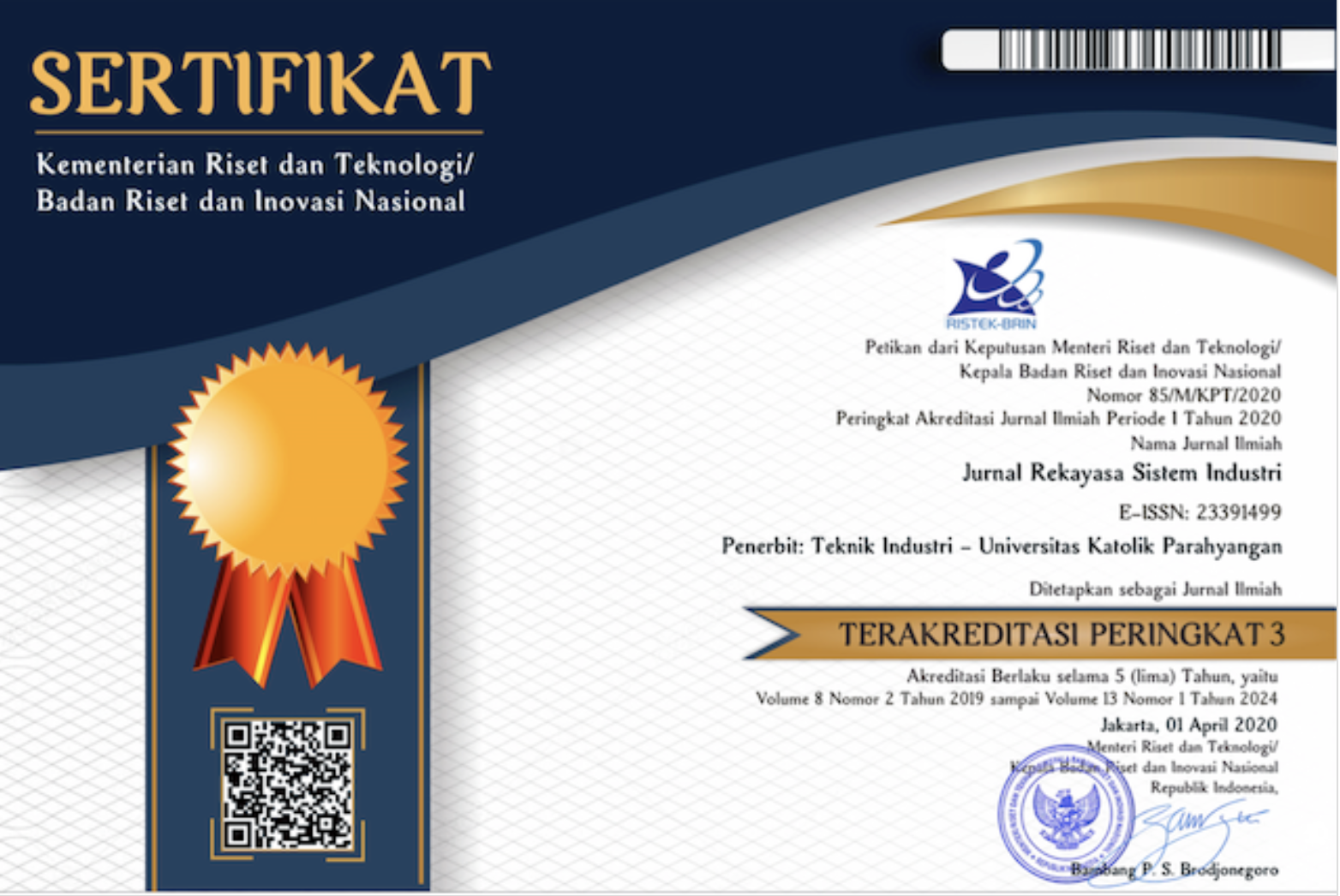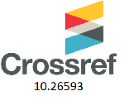Pengukuran Beban Kerja Pada Managerial Level Dan Supervisory Level Dengan Menggunakan Metode Defence Research Agency Workload Scale (DRAWS) (Studi Kasus Di Departemen UHT PT. Ultrajaya Milk Industry & Trading Co, TBk )
DOI:
https://doi.org/10.26593/jrsi.v5i2.2214.69-78Abstrak
Measurement of workload is a technique to get information about the efficiency and effectiveness of an organizational unit, or office holders through a process of research and assessment. It is conducted by using job analysis, workload analysis or other management techniques. PT. Ultrajaya Milk Industry & Trading Co., Tbk is manufacturer of the food and beverage. The company is always trying to meet the needs of consumers by creating products with high quality and competitive price. The high stress level perceived by Managerial Level and Supervisory Level become an important reason for the Department of Ultra High Temperature (UHT) to conduct workload analysis. By measuring the employees workload, it will be known whether the workload of an employee is optimal load or overload. This situation will affect the human-performance (employee). Based on calculations by the DRAWS method is yielded the average workload score for Managerial Level of 67.37% (in the overload category), while the dominant workload variable in Central Demand (CD) is 41.60%, the distribution of the mental workload is 72.60% and physical workload is 27.40%. While for Supervisory Level is yielded the average workload score of 64.59% (in the overload category) ), where the dominant workload variable in Central Demand (CD) is 33.63%, the distribution of the mental workload is 55.10% and physical workload is 44.90%. Therefore the perceived mental workload of Supervisory Level is still relatively comparable compared to physical workload, and in contrast to the perceived Managerial Level which is dominated by mental workload.Referensi
Gilley, Jerry, and Maycunich, Ann. (2000). Beyond The Organization Enhancing Your Company’s Capability. New York : Perseus Books.
Griffin, W. Ricky. (2012). Management (11st Ed.). USA : Cengage Learning.
Institute for Occupational Ergonomics (IOE). (2005). Train Driver Mental Workload : The Train Driver DRAWS Tool Guidance Note. Research Programme. Rail Safety & Standard Board. Diakses dari : http://p.sparkrail.org/record.asp?q=PB009402. [20 Februari 2015].
Reis, Matthew, and Geller, Judith. (2010). A manager’s Guide to Human Behavior. USA : American Management Association.
Salmon, Paul, Stanton, Neville, Baber,Chris, Walker, Guy, and Green, Damian. (2004). Human Factors Design & Evaluation Methods Review. Human Factors Integration Defence Technology Centre. Diakses dari :
https://www.defencehumancapability.com/Portals/0/HFIDTC/HFI%20Methods%20and%20Models/Phase%201/hf-design-evaluation-methods.pdf. [20 Februari 2015].
Stanton, Neville, Salmon, Paul M., and Rafferty, Laura A. (2005). Human Factors Methods: A Practical Guide for Engineering and Design. England : Ashgate Publishing Company.
Ultrajaya Milk Industry & Trading Co. TBk, PT. Ultrajaya at Glance, Bandung, [On Line], Diakses dari:
http://www.ultrajaya.co.id/corporatehall/ultrajayaataglance/. [20 Februari 2015].
Ultrajaya Milk Industry & Trading Co. TBk. (2015). Usaha & Kinerja Terkini untuk 9 Bulan 2015. Bandung : PT. UJMI.













